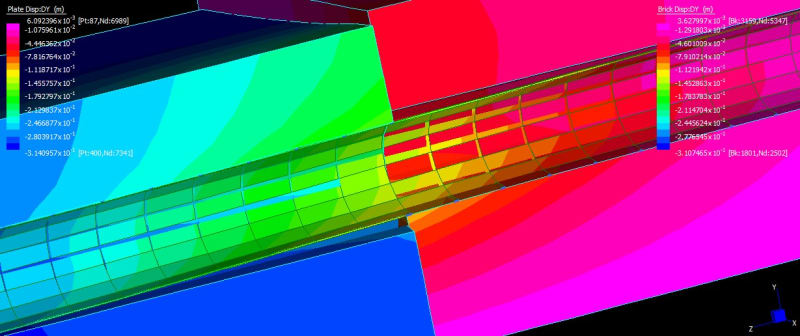Ardi_Eng
Mechanical
- Aug 11, 2018
- 7
Hello dears!
I'm going to model a buried pipe repaired by composite sleeve under soil large displacement. I'v tried to do modelling in Ansys "static" structural and used Mohr-Coulomb to define soil plasticity. I set 2 steps, in first step, internal pressure and Earth gravity were applied and in second step, large displacement of soil in vertical direction with 0.5 meter value was applied to bottom side of one of blocks. The model was solved in first step but it doesn't converge in second one and I don't know why.so my questions are:
1) IS Ansys "static" structural suitable for analyzing large displacement of soil or not?
2)Should I use Ansys "Transient structural" for these types of large motions or Ansys "Static" Structural can also be used for this modelling (with quasi static assumption)
3) If I use Static analysis for it, what should or can I do to achieve solution convergence.
Some photos of my modelling can be observed in attachment files
Any answer can be appreciated
Thanks in Advance
I'm going to model a buried pipe repaired by composite sleeve under soil large displacement. I'v tried to do modelling in Ansys "static" structural and used Mohr-Coulomb to define soil plasticity. I set 2 steps, in first step, internal pressure and Earth gravity were applied and in second step, large displacement of soil in vertical direction with 0.5 meter value was applied to bottom side of one of blocks. The model was solved in first step but it doesn't converge in second one and I don't know why.so my questions are:
1) IS Ansys "static" structural suitable for analyzing large displacement of soil or not?
2)Should I use Ansys "Transient structural" for these types of large motions or Ansys "Static" Structural can also be used for this modelling (with quasi static assumption)
3) If I use Static analysis for it, what should or can I do to achieve solution convergence.
Some photos of my modelling can be observed in attachment files
Any answer can be appreciated
Thanks in Advance

